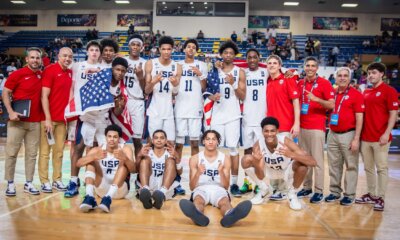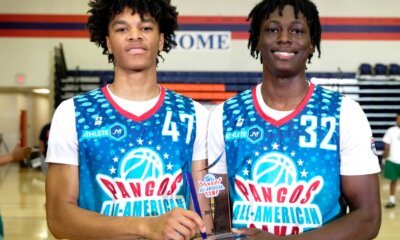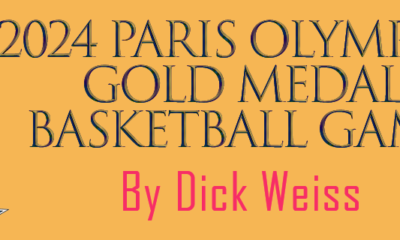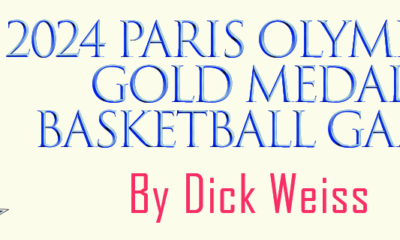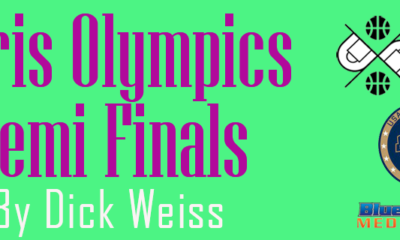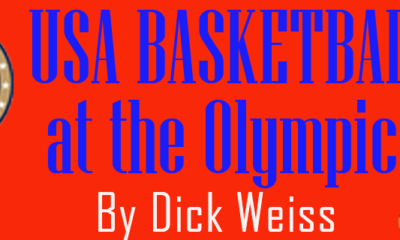It was five years in the making, but the Ed O’Bannon anti-trust law suit against the NCAA has finally reached a federal courtroom in Oakland, Calif.
And It hasn’t taken long for the lead plaintiff, a former UCLA All American forward on the Bruins’ 1995 national championship team, to characterize his college athletics experience as striictly a business transaction. “I was an athlete masquerading as a student,” O’Bannon said. “I was there strictly to play basketball. I did basically the minimum to make sure I kept my eligibility academically so I could continue to play.”
O’Bannon said his primary job was to play basketball and said he spent 45 hours working on his game and only 12 hours a week on his studies, changing his major from communicatons to history because an academic advisor advised him it would be the easiest way to manage his practice schedule. He wound up spending five years in college and was rewarded with his selection as national Player of the Year during his senior year. He was seven credits short of graduation before he was drafted into the NBA as a lottery pick by the New Jersey Nets.
O’Bannon spent two years in the NBA and another seven playing professionally in Europe. He now lives in a Las Vegas suburb, where he makes his living as a used car executive.
His tale has become all too familiar for former college athletes. More and more seem intent on exposing the NCAA as a made for profit operation that has abused them for years by using their own images on TV broadcasts and re-broadcasts to generate cash for their universities without compensating them.
This is a defining moment for the NCAA,
O’Bannon and 19 other plaintiffs in this class action case are asking U.S. District Judge Claudia Wilken for an injunction that would allow athletes to sell the rights to their images. If successful, the plaintiffs — who are not asking for individual damages — could open the door for a system that uses some of the huge money from TV contracts to pay athletes for their play, provide assistance for athletes who want to complete their degree work and guarantee long term medical coverage once they are finished with their college careers.
As the trial began, the NCAA announced it had reached a $20 million settlement in a related case involving video games that used the likenesses and images of players without getting their permission. NCAA attorney Donald Remy acknowledged that the settlement in a suit brought by former Arizona State and Nebraska quarterback Sam Keller will result in some current players getting money but said it doesn’t change the NCAA’s strong belief that the collegiate athletic model of amateurism is lawful.
Good luck with that.
O’Bannon, who joined the lawsuit that carries his name after seeing his image used in a NCAA-branded video game, said he signed a letter of intent to UCLA that he never read because he was a 17-year-old teenager excited about marketing himself at UCLA.
But he is older, and obviously much wiser. .
From here, it appears O’Bannon and the 19 other plaintiffs have a strong case. The idea O’Bannon played for UCLA for four years, but the NCAA can benefit off his likeness forever seems morally wrong at the least.
The NCAA should have settled this case long ago, but their egos got in the way. They refused. And it is becoming more and more obvious the NCAA feels the outcome on this trial could change the economics of college athletics so radically, it is in their best interest to put up a fight. There is a massive amount of money at stake here. If the judge rules for the plaintiffs, it would force the NCAA to hand more than $20 billion in TV revenues and licensing fees. A win for the plaintiffs would also force the NCAA to develop a more equitable system in which the athletes who peform get a decent share of the profits.
The NCAA can argue all it wants about maintaining amatuerism in college athletics. rationalizing that getting a degree for free equates to a 40-hour work week that involves weekend tavel. At one time before the NCAA signed a six year, $14 billion dollar TV right deal for the NCAA touranment and colleges created a BCS football playoff that could generate $500 miillion dollars a year for starters, that might have been true.
But the money is out of control. Elite coaches like John Caliapri and Nick Saban are paid over $5 million dollars and NCAA executive director Mark Emmert is making $1.6 million a year with the use of a private plane while student athletes receive a scholarship that doesn’t even cover the cost of attendance.
The NCAA has tried to bail itself out by backing the idea of a $2,000 stipend for Division I athletes. But it is too late. College athletes want more than just tuitioin, room and board. They want their voices heard.



